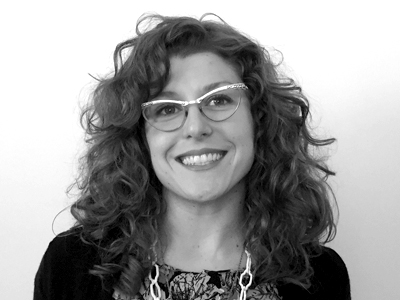
Adriane Dalton: Start by telling our readers about your background. Where are you from, and where do you live currently?
Sarah Rachel Brown: I’m from the Midwest—born in Oklahoma, then at age 10 moved up to Iowa where my mother’s family was based. In my adulthood, I’ve moved around quite a bit. In my early 20s I went on tour with my friends and sold merch. I saw the West Coast for the first time, which completely awakened me to the fact that I needed to leave Iowa and experience something else. Upon returning home, I dropped out of college and moved to Seattle, where I remained for six years. I love that city, but I left because I was given a fellowship at the Penland School of Crafts, in North Carolina, followed by a one-year residency at the Arrowmont School of Arts and Crafts, in Tennessee.
By the time my stint of residencies was over, Seattle was being called the next San Francisco in terms of cost of living, so I moved to Philadelphia, where I’ve been since 2016. Philadelphia has been good to me; I definitely made the right choice in moving here.

One of the persistent topics on Perceived Value is educational background and the costs associated with it. To turn the tables, please describe your experience with education and navigating the economics associated with your educational experiences.
Sarah Rachel Brown: In my interviews I begin with this topic because I believe a person’s socioeconomic background is key to understanding the experiences and opportunities they’ve been afforded, such as a four-year education at a university.
For myself, my father was not present during my formative years and my mother had multiple sclerosis and lived in a nursing home the majority of my life, so I knew very early on that my education was going to be my responsibility. After high school, I attended the University of Iowa, funded by FAFSA and supplemented by student loans. I’ll never forget what my grandfather said to me the day I opened my financial aid packet. “You should get a full-time job and try supporting yourself.” At the time I was furious with him; now I see his point. I had no idea what I wanted for my education, but I was told [college is] what you do and I was anxious to move out of my grandpa’s house. Don’t get me wrong, he was my father figure and I love him dearly, but being an 18-year-old woman under a 78-year-old man’s roof is no picnic.
The University of Iowa didn’t work out; I hated class and I was on crew, which was very demanding, and I wasn’t prepared to be a college athlete. I failed out, returned home, and went to a private liberal arts college a few blocks from my house. Again, FAFSA paid the way, supplemented by loans and a vocal scholarship to sing in the choir. I did well there; good grades and I worked at the college’s radio station. In my second year, I dropped out mid-semester to move to Seattle. My advice: Don’t abruptly drop out—you automatically fail all your classes. After all of this, I got out with only $10,000 in student loans and the promise that I wouldn’t be getting any help from FAFSA anytime soon, rightfully so.
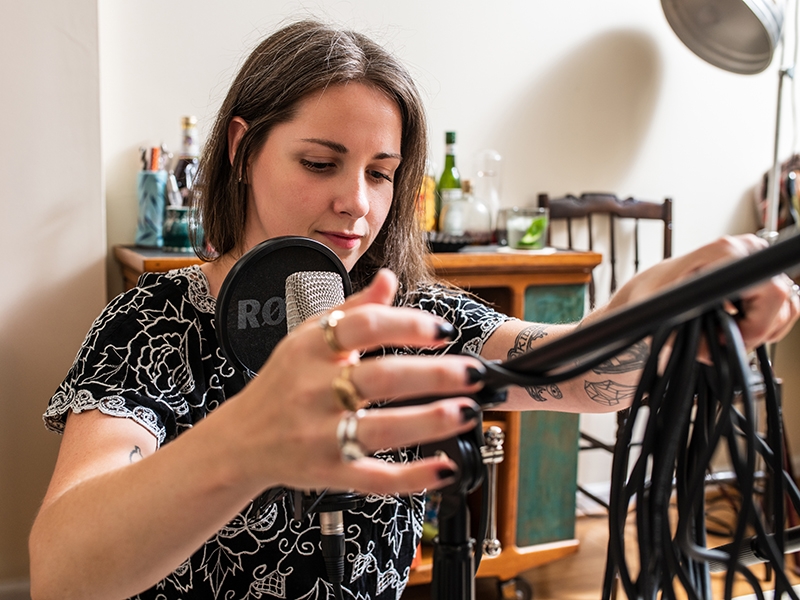
Your podcast is truly one-of-a-kind, and these kinds of conversations feel overdue but also wholly contemporary. How did you develop the idea, and how did you set about realizing it?
Sarah Rachel Brown: In 2015 I went to a lecture by fiber artist Sonya Clark, during which she said, “You must find your own authentic obsession and you must stick to it.” I scribbled down these words on the back of my checkbook. At the time, I was in the midst of my Core Fellowship at Penland, struggling to find my “voice” as an artist and completely broke.
My intention with the fellowship was to learn the techniques needed to work as a jeweler and give myself time and space to experiment. I had a difficult time, and still do, allowing myself to make work that’s not easily sellable. My primary concern was not developing concepts within my practice but rather finding a way to pay my studio fees. This directly affected the type of work I made. Simultaneously, I was meeting artists whom I greatly admired and assumed were making a living off of their artwork, but I was quickly realizing that many were either in academia or had some other situation that allowed them to create work without the constraint of financial prospects. Sonya’s words helped me realize my own authentic obsession is my financial well-being.
I decided I was going to compile a series of interviews with contemporary jewelry artists in which they divulged how they were making their living. I wanted to create a book that would serve as a resource for students studying jewelry and metals, and that would help them understand the ways in which they could make a viable income with their newly acquired skills. I shopped the idea around to my close friends, some of whom were very encouraging and others cautionary. I get it—talking about money is considered a faux pas in our society, but I’ve always been the type of person who asks you what your rent is at your housewarming party.
The idea turned into a podcast the day I was honest with myself about the fact that publishing a book was expensive and I’m much more adept at talking than writing. In recent years, my mother and grandfather passed away, and I was left with an unexpected inheritance, almost $60,000, so I used some of that money to purchase my podcasting equipment, was given a few tutorials, and set about finding someone willing to be my first guest. I’m still so grateful to Emily Cobb for her support and being my first interview.
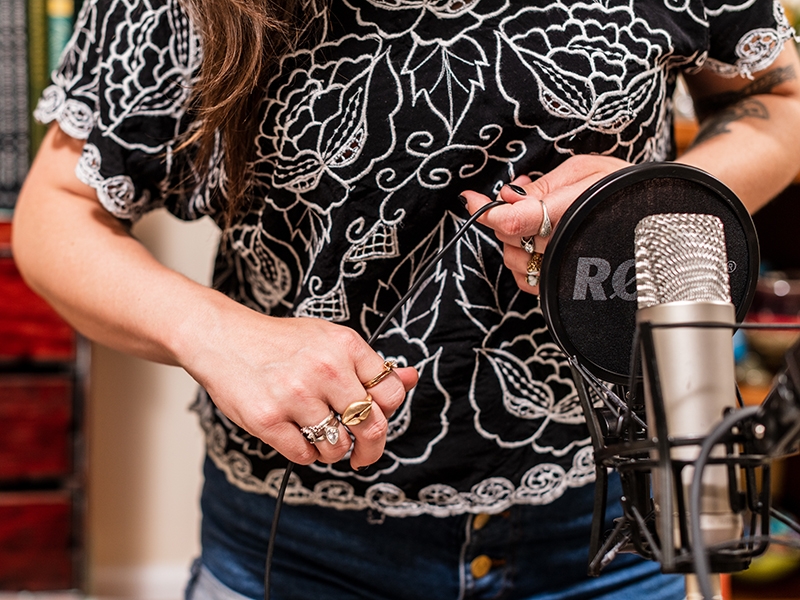
Among the core tenets of Perceived Value is transparency about topics that, particularly in American culture, are viewed as too gauche, taboo, or personal to talk about publicly. These topics include student loan debt, familial support, generational wealth, personal income, and taxes, among others. How do you foster an environment that allows your guests to speak candidly about these sensitive issues?
Sarah Rachel Brown: I believe it’s a mixture of helping my guests feel prepared and simply that I’m an approachable person. There has to be trust, and that I can’t control, but I think my guests know my intentions are to help our community by having these conversations, and that’s key.
Prior to each recording, I send my guest a rough outline of the questions that I intend to ask. I request that they come prepared with financial figures, if possible, but that they not bring a copy of the outline to the interview. This gives my guests the opportunity to let me know what they are or are not comfortable talking about, and reassurance that they won’t be put on the spot about sensitive topics.
I only do interviews in person and I approach each guest the same way: sincerely curious and free of judgment. Also, I find that a glass of wine or a cocktail really helps calm the nerves.

What have been some responses to this project? Have you had any resistance?
Sarah Rachel Brown: The responses have been overwhelmingly positive, which is a bit of a shock because I fully expected to get trolled before applauded. I’ve had artists from all over the world reach out to me and I’m often thanked for asking the questions many are afraid to. And it’s not just jewelers; I’ve heard from glass artists, ceramicists, and individuals who have nothing to do with the arts.
Shortly after I started the podcast, I did receive a critical email from a listener about a comment I had made, and they had a point. I wrote a thoughtful response thanking that person for bringing their point of view to my attention and letting them know that, moving forward, I would do my best to take into account others’ perspectives when voicing my opinions, but I made a point not to apologize. I’m entitled to my opinions and never once have I said that I know what I’m doing or that I’m an expert on anything, really. I’m just a person following my authentic obsession, asking all the questions my grandmother told me not to, and putting it on the Internet. I’ll know I’m really getting somewhere when the Internet trolls come for me.
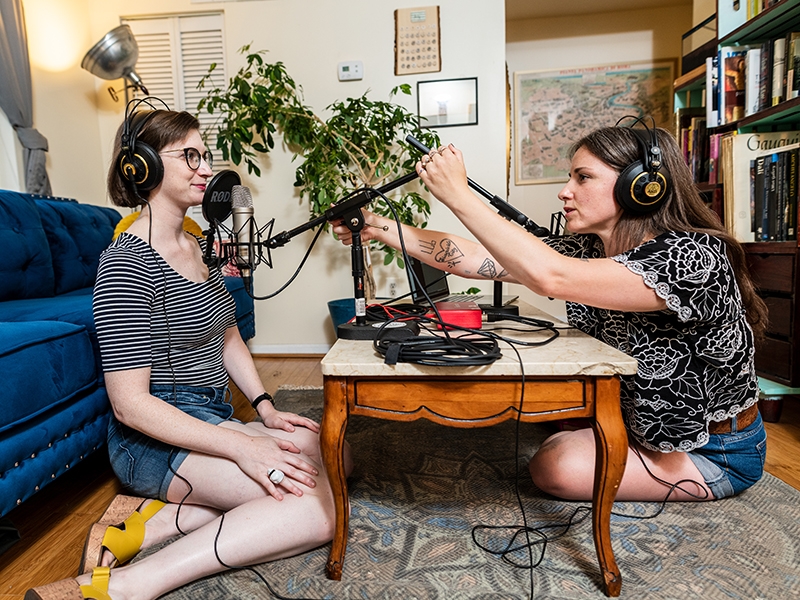
Your interviews are conversational in format and come across as organic. How do you select interviewees and prepare for interviews?
Sarah Rachel Brown: Selecting interviewees often comes down to timing and location. I’ve found guests through Tinder and randomly at concerts, but the majority has been through my craft school connections.
Honestly, there’s not much I do to prepare other than getting a good night’s sleep so I don’t sound haggard, and glancing over the interview outline and their resumé.
Can you pull back the curtain for us and describe the behind-the-scenes labor of creating each episode? How long do you spend on setup, recording, and editing?
Sarah Rachel Brown: Each episode starts with that initial rough outline, which, depending on the guest, can take me 30 minutes or a couple of hours to write. I have to do my research to ensure that I’m asking relevant questions and bringing up interesting opportunities they’ve experienced.
The actual taping of the interview can take anywhere from an hour and a half to three hours. Setting up my equipment takes about 15 minutes. I prefer my interviews to be an hour long, but often they’re longer, and there’s the time it takes to welcome the individual into my home, offer them a drink, and give them time to warm up to hearing their voice through their headphones. Often, my interviews involve me traveling, and I’ll dedicate a day or two to getting a recording.
My days off are Thursdays and Fridays, and I dedicate Thursdays to producing the episode and Fridays are when I release it. I usually listen to the interview in the morning with my coffee and as I listen, I note the key topics we ended up discussing and any phrases or descriptions that could be used for the title. After I listen, I write my introduction. I’ve learned that I actually have to write it out—for some reason it’s never as good if I type it and read it off of a computer.
Once written, I record the intro, which takes at least an hour. I then edit everything together, adding in my background music and my pre-recorded intro and outro. If everything goes really smoothly, this entire process takes six to eight hours, but often it doesn’t and I do something stupid and find myself recording at 5 a.m. on Friday morning so you don’t hear the construction workers outside my apartment. Then of course there’s the time I put into creating the episode’s web page, publishing, writing the description, sending the newsletter, formatting images to post on social media, and posting to my Patreon page.
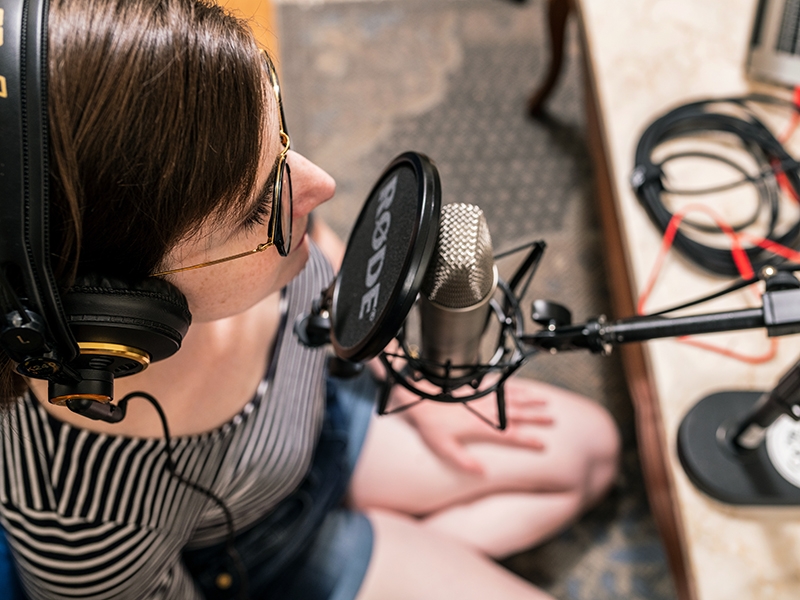
On the website for Perceived Value, you refer to yourself as a “facilitator.” Can you elaborate on what you mean?
Sarah Rachel Brown: As my career progresses, I identify less as a studio artist and more as someone who contributes to the contemporary jewelry field through the opportunities I’m able to create or offer to others. I’m the Metals Coordinator for Arrowmont School of Arts and Crafts’s annual Pentaculum residency, which means I curate a group of artists each year to participate in the invite-only event. I am also a university ambassador for Arrowmont and work with the outreach and partnership liaison to partner with universities to offer students scholarships to take a workshop. I’m a US ambassador for Art Jewelry Forum and, beyond the official titles, I have a knack and passion for connecting people and helping others make things happen.
Has the way you approach the podcast changed since you started? Has the podcast changed how you approach your creative practice?
Sarah Rachel Brown: My first year of podcasting was all about me proving to myself that I could do it and remain dedicated to the project. As I enter my second year and my second season, I’m focused on generating income so I can afford to hire someone to help with marketing and expanding my audience. I’d love to publish an episode weekly instead of biweekly, but there’s no way I can pull that off with my full-time day job.
The podcast has definitely infiltrated my creative practice; my current work is about facing my fear of what people think my jewelry is worth. Value Optimized Pricing is an ongoing project where I ask observers to fill out a data collection sheet about the piece I have on display. I ask for their current occupation, if they have experience metalsmithing, and their perceived value of the work. This series is still in its infancy, but it’s the first time I’m making something without the intention of selling, and I’m really excited about it.
To be honest, I haven’t made a piece of jewelry in months. The majority of my creative practice is the podcast.

Are there any people on your list of “dream” interviewees that you feel comfortable sharing with us?
Sarah Rachel Brown: I love this question! Jewelry-wise: Sienna Patti, Helen Britton, and Lola Brooks. Fiber artist Sonya Clark or author and curator Glenn Adamson. Someone whose partner is well off, so they don’t have to generate an income with their creative practice.
In episode 21, you talk about overcoming your personal stigma around having a “nontraditional” educational journey. What advice do you have for people who are seeking specialized knowledge and skills but for whom an academic setting is financially inaccessible or incompatible?
Sarah Rachel Brown: A nontraditional education is not a weakness, it’s a strength. It shows that you’re determined and savvy. If you don’t know where to start, take a class at a local arts center, seek mentors—find someone doing what you aspire to, ask them if you can assist them in any capacity, and once you have an in, work so hard and be so dedicated that they’ll never want to let you go.
Take a workshop at a craft school—in two weeks you can learn more skills than in an entire first quarter of college (so I’ve been told). They’re still not that cheap, but there are work-study programs and scholarships. The important thing is that you have to want that training more than anything, and you’re willing to work twice as hard to get it.
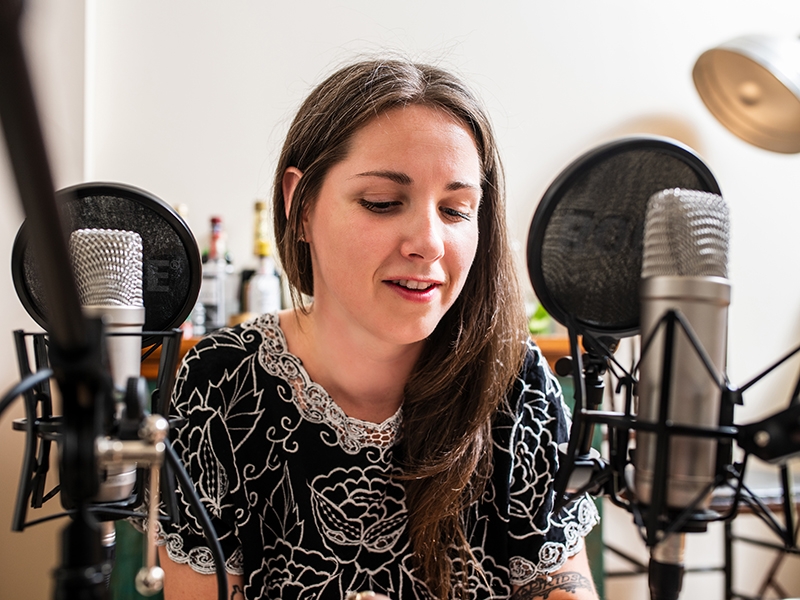
I always ask interviewees what they’re reading, but can you also tell us what other podcasts you’ve been listening to lately?
Sarah Rachel Brown: I recently finished Meaty, by Samantha Irby, and her candidness I really love. She writes about her mom having MS and she brings up some pretty gnarly things that she had to deal with that I definitely relate to.
Podcasts! I start my day with The Daily, by the New York Times. It’s my version of the morning paper. Guys We F****d has been a huge inspiration in how they conduct their interviews and their transparency around their sexuality. This American Life, Criminal, 99% Invisible, Savage Love, and pretty much anything on Radiotopia.
I would be remiss if I didn’t take this opportunity to ask: Is your use of the phrase “broaching the subject of value” in the intro to Perceived Value an intentional jewelry pun, or just a convenient linguistic coincidence?
Sarah Rachel Brown: At the time it was just a convenient linguistic coincidence but, damn, I wish I were that clever!
Thank you!
